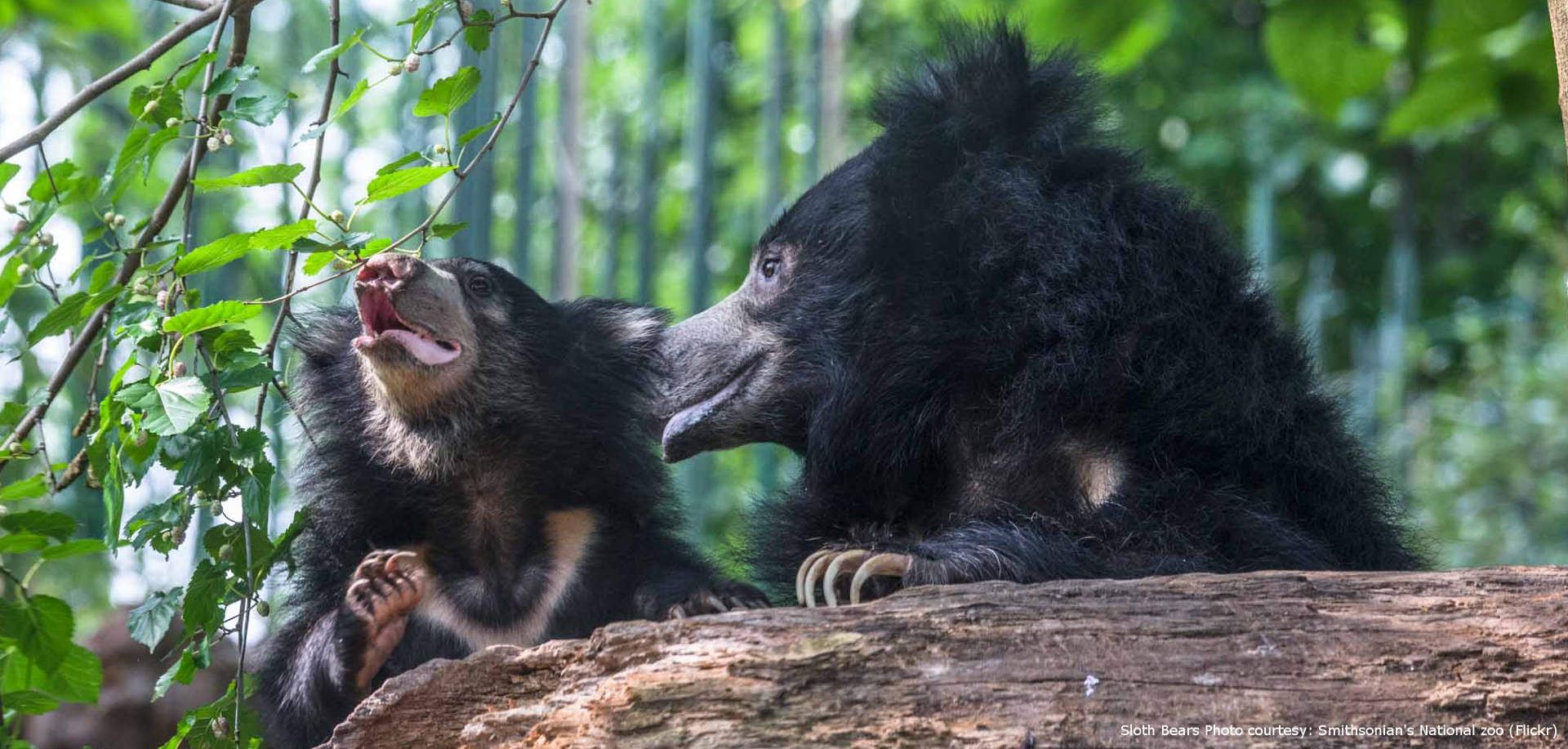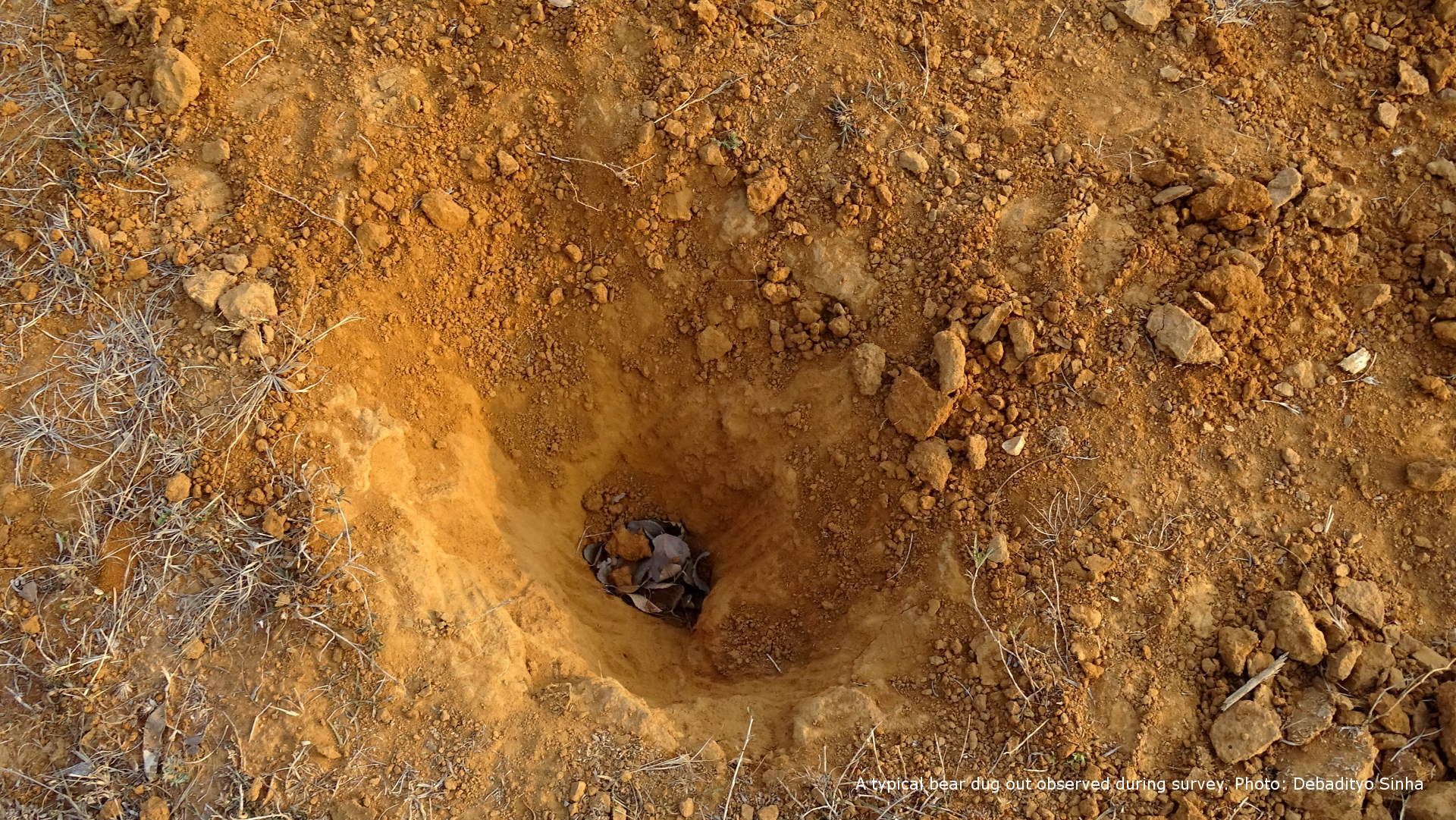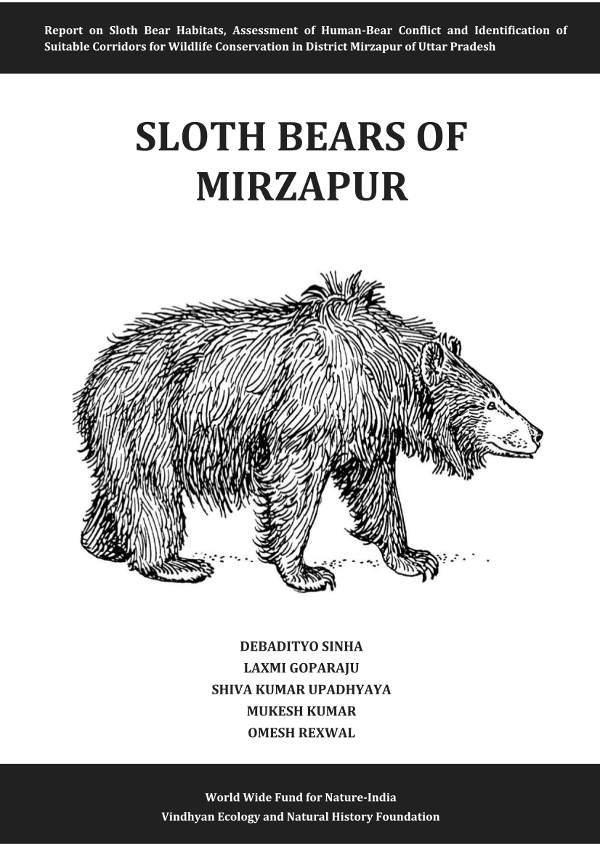The study was conducted by Vindhyan Ecology and Natural History Foundation in partnership with Worldwide Fund for Nature-India and with the help of Forest Department-Mirzapur (Uttar Pradesh) in the year 2015-2016
Mirzapur, once a first-rate hunting district, has been known for its great wildlife heritage in pre-independence time. However, this region is yet to receive the deserved attention from the government and wildlife fraternity. This report is the first published work on the distribution of any terrestrial wild animal in district Mirzapur of Uttar Pradesh. This not just include ground truthing data on the distribution of Sloth Bears, the flagship species of forests of Mirzapur, but also gives an insight into the conservation threats, challenges, and the possible solutions. This document is expected to be an eye-opener for the government, policy planners, wildlife managers, researchers as well as general nature lovers.”
It is interesting to see the findings summarized on the map view below! ?
Click the Red Icons in the map to see forest range wise summary of information
Sloth bears have been known to be historically inhabiting the forests of Mirzapur which is marked by dry deciduous forests and hilly terrain. They are endemic to the Indian subcontinent and is only species of bear adapted to myrmecophagy i.e. feeding on ant and termite apart from sugar-rich fruits which form its main diet. The flexibility in their diet has been a very critical factor for the sloth bears to thrive in small home ranges, which in turn have helped them survive in harsh conditions and tolerant to a certain level of human disturbances. However, protection of their prime habitats is the key to the protection of this animal which is also protected as Schedule-I of Wildlife (Protection) Act, 1972.

Cumulatively 239 geospatial evidences of sloth bears (signs like scats, scratch marks and the typical bear dug-outs) were collected over a total trail of more than 26 km spanning over 5 different forest ranges-
Marihan, Sukrit, Chunar, Patehara, and Dramadganj.
The 106-page report gives a detailed description of each of the forest ranges surveyed based on their topography, water sources, continuity with surrounding forest areas as well as on general protection status and threats with help of 22 geospatial maps, 43 images, and 11 data representations. The study estimates an area of 430 sq.km. of core sloth bear habitat and a total of 1110 sq.km of Reserve Forest area which may be protected as wildlife habitat.
Towards the end, there are several suggestions based on ecological, administrative and legal measures which we believe will be beneficial to the forest and wildlife managers.
The contents and the full report can be downloaded from the links provided below.
TABLE OF CONTENTS
SUMMARY [Download PDF]
COVER PAGE [Download PDF]
LIST OF TABLES AND MAPS [Download PDF]
FOREWORD [Download PDF]
ACKNOWLEDGEMENT [Download PDF]
Chapter 1: INTRODUCTION [Download PDF]1.1 About Mirzapur
1.2 About Sloth Bear
Chapter 2: SIGNIFICANCE OF THE STUDY [Download PDF]
Chapter 3: DESCRIPTION OF STUDY AREA [Download PDF]
3.1 Climate and Topography
3.2 Vegetation
3.3 Wildlife
Chapter 4: METHODOLOGY [Download PDF]
Chapter 5: FIELD OBSERVATIONS [Download PDF]
5.1 Marihan Forest Range
5.2 Chunar and Sukrit Forest Range
5.3 Patehara Forest Range
5.4 Dramadganj Forest Range
Chapter 6: ASSESSING THE SLOTH BEAR ATTACKS [Download PDF]
6.1 Explanation for attacks ‘inside’ forests of Patehara, Marihan and Sukrit
6.2 Explanation for attacks inside ‘forests’ of Marihan and Sukrit
6.3 Explanation for attacks in ‘village’ Banjari Kala
6.4 How to be safe from Sloth Bear attack?
Chapter 7: MAJOR THREATS [Download PDF]
7.1 Landscape Change
7.2 Deforestation/Loss of Forests
7.3 Excessive Grazing
7.4 Roads, Rail & Canals
7.5 Forest Fires
7.6 Hunting
7.7 Exotic Species
Chapter 8: MYTHS [Download PDF]
8.1 Most of the conflicts are result of animals mistakenly straying from neighboring Protected Areas
8.2 Landscape change has nothing to do with decrease in wildlife
Chapter 9: RECOMMENDATIONS [Download PDF]
9.1 Protection & Conservation of Habitats & Corridors
9.2 Protection of watersheds and river catchments
9.3 Administrative Reforms
9.4 Increasing Legal Protection
9.5 Alternate Livelihood
Chapter 10: CONCLUSION [Download PDF]
Chapter 11: REFERENCES [Download PDF]
The report can be freely accessed, copied and distributed under Creative Common Attribution, Non-Commercial, No Derivatives India license (CC-BY-NC-ND-2.5-IN)




